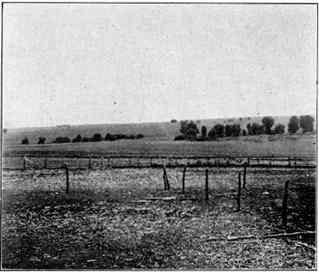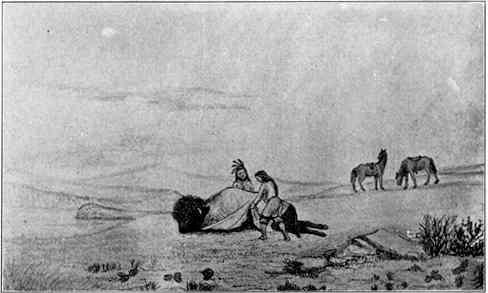|
20
|
SEMI-CENTENNIAL HISTORY OF
NEBRASKA
|
|
mountains. The latter story was known only to
the old men. Many things which cannot be enumerated here
confirm its main outlines, and indicate that the tribe
had come in contact with the semi-civilization of the
Mexican Indians and through long centuries had slowly
migrated northeast and then northwest. The migration was
in waves, the Aricaras being the pioneers and going on up
the Missouri, then followed the Skidi band of Pawnees who
were in Nebraska many years before the Grand, the Tapage
and finally the Republican bands followed them. One
significant fact may well be mentioned: The Pawnees
offered human sacrifices--the last ones occurring since
they became subject to the United States.
Pawnee society had
progressed so far that there were distinct tokens of the
beginning of the feudal system. Strong, far-sighted war
chiefs gathered around themselves groups of youth and
even old men who were glad to do the work of their
households, serve under them

Site of Ancient Pawnee Village. Scene of General
Thayer's Treaty of 1855,
Three Miles Southeast of Fremont, Neb.
in war and the chase, for the share that fell to
them of the chief's food, protection and glory. We shall
find similar associations among the Sioux,--with some
differences. There were jealousies and differences of
custom and speech between the four bands, but during a
large part of the past century they were united under one
chief of the whole Pawnee nation,--Pita-Leshar-u, a
really great leader, the memory of whose name is still
cherished by many white people.
The constant wars of the
Pawnee nation made great gaps in their numbers which were
never filled. In the very earliest days of contact with
whites they probably had 20,000 people, but the first
careful estimates of their numbers made early in the
nineteenth century by counting their lodges put them at
10,000. The Pawnee country was directly in the path of
the early routes of travel across the plains. The white
man's liquor and diseases made large inroads upon the
tribe. Their enemies
|





